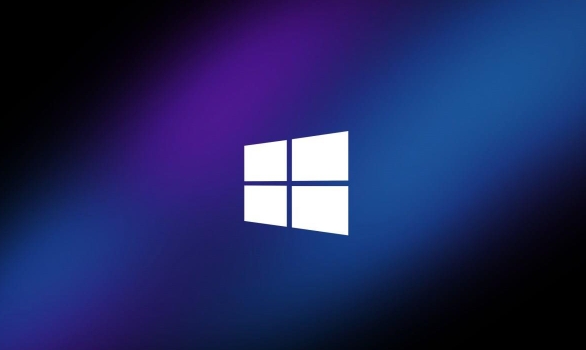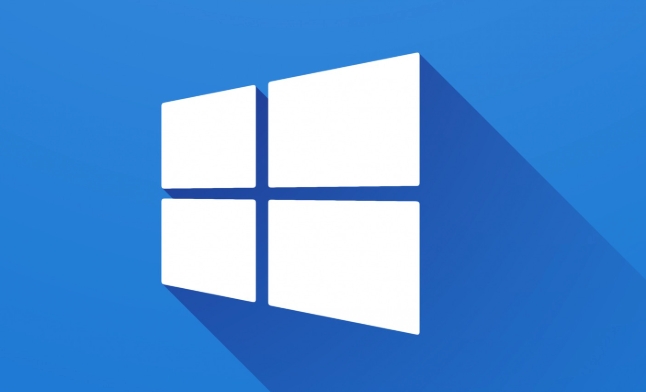How to fix 'DNS server not responding' on Windows?
Jun 30, 2025 pm 04:07 PMWhen encountering the problem of "DNS server not responding", it is usually because the computer cannot access the website through domain name resolution. Solutions include: 1. Check whether the basic network connection is normal, confirm the router's running status and whether other devices can access the Internet; 2. Change or reset the DNS server address, and manually specify public DNS such as Google's 8.8.8.8 and 8.8.4.4; 3. Reset network settings and services, and execute commands such as netsh winsock reset, netsh int ip reset, ipconfig /release, ipconfig /renew and ipconfig /flushdns; 4. Ensure that the "DNS Client" system service has been started and set to automatic; 5. Update the network card driver and check whether the firewall or antivirus software interferes with DNS requests.

When encountering the problem of "DNS server not responding", it usually means that your computer cannot access the website through domain name resolution. Although it may be connected to the network, the web page cannot be opened. The solution is actually not too complicated, and it mainly focuses on network settings, DNS configuration and system services.

Check whether the basic network connection is normal
First, confirm whether it is a problem with the network itself. for example:

- Is the router running normally? Can other devices be accessed online?
- If it is a Wi-Fi connection, try switching to a wired connection to see if there is any improvement.
- Restart the router and modem, sometimes a simple restart can solve the problem.
If other devices are fine and only your Windows computer has an error, you can basically confirm that the problem lies in the local configuration.
Replace or reset the DNS server address
By default, most Windows systems will automatically obtain DNS addresses, but sometimes the operator's DNS server is unstable or blocked, which will lead to resolution failure. It will be helpful to manually specify a public DNS at this time.

You can try the following:
- Open Control Panel → Network and Sharing Center → Click the name of the currently connected network.
- Click "Properties" → Double-click "Internet Protocol Version 4 (TCP/IPv4)".
- Select "Use the following DNS server address":
- Preferred DNS server:
8.8.8.8 - Alternate DNS server:
8.8.4.4(This is the public DNS provided by Google)
- Preferred DNS server:
After saving, try opening the browser again. If you don't want to use Google's DNS, you can also change it to Cloudflare's 1.1.1.1 or OpenDNS address.
Reset network settings and services
Sometimes, problems with the system's own network protocol or service can also lead to DNS exceptions. You can try the following commands:
- Open a command prompt (run as administrator):
- Enter
netsh winsock resetto enter - Enter
netsh int ip resetreset - Enter
ipconfig /releaseandipconfig /renewto refresh the IP - Finally, execute
ipconfig /flushdnsto clear the cache
- Enter
These commands can fix some common network protocol errors and DNS caching issues. After completion, it is recommended to restart the computer to see the effect.
In addition, check whether the DNS Client system service is enabled:
- Press Win R and enter
services.mscto enter - Find the "DNS Client" service and right-click to view the properties
- Make sure the startup type is "automatic" and the current status is "running"
If not, click the "Start" button to make it run.
Troubleshooting driver and firewall interference
Sometimes the network card driver is too old or damaged, which can also affect the DNS response. You can update the network card driver in the device manager, especially the related devices under the "Network Adapter".
In addition, some antivirus software or firewalls may intercept DNS requests. You can try temporarily closing third-party security software to see if the problem is alleviated.
Basically these common ways of handling it. In most cases, changing DNS first and then resetting the network service can solve the problem of "DNS server not responding". If you accidentally correct the wrong settings, remember to restore to "Automatically obtain DNS server address".
The above is the detailed content of How to fix 'DNS server not responding' on Windows?. For more information, please follow other related articles on the PHP Chinese website!

Hot AI Tools

Undress AI Tool
Undress images for free

Undresser.AI Undress
AI-powered app for creating realistic nude photos

AI Clothes Remover
Online AI tool for removing clothes from photos.

Clothoff.io
AI clothes remover

Video Face Swap
Swap faces in any video effortlessly with our completely free AI face swap tool!

Hot Article

Hot Tools

Notepad++7.3.1
Easy-to-use and free code editor

SublimeText3 Chinese version
Chinese version, very easy to use

Zend Studio 13.0.1
Powerful PHP integrated development environment

Dreamweaver CS6
Visual web development tools

SublimeText3 Mac version
God-level code editing software (SublimeText3)

Hot Topics
 Windows night light not working
Jul 29, 2025 am 05:34 AM
Windows night light not working
Jul 29, 2025 am 05:34 AM
Night mode cannot adjust the color temperature or does not take effect, which is usually caused by system settings or driving problems. First check whether night mode is actually enabled: go to Settings > System > Display, confirm that the "Night Mode" switch is on. If the gray is not selected, it may be a problem with the graphics card driver or system version; secondly, if the color temperature adjustment is invalid, you can try restarting the Explorer, use the registry to repair, reset the night mode settings, and turn off the conflicting third-party software; finally check the time and geographic location permissions: Ensure that the location is allowed in the privacy settings, and enable the automatic time and time zone setting function.
 Linux vs Windows: Which Operating System is Better for You?
Jul 29, 2025 am 03:40 AM
Linux vs Windows: Which Operating System is Better for You?
Jul 29, 2025 am 03:40 AM
Windowsisbetterforbeginnersduetoeaseofuse,seamlesshardwarecompatibility,andsupportformainstreamsoftwarelikeMicrosoftOfficeandAdobeapps.2.LinuxoutperformsWindowsonolderorlow-resourcehardwarewithfasterboottimes,lowersystemrequirements,andlessbloat.3.Li
 How to assign a drive letter in Windows
Jul 30, 2025 am 04:54 AM
How to assign a drive letter in Windows
Jul 30, 2025 am 04:54 AM
ToassignadriveletterinWindows,useDiskManagementorCommandPrompt.2.InDiskManagement,pressWindows X,selectDiskManagement,right-clickthevolumewithoutaletter,choose"ChangeDriveLetterandPaths",clickAdd,selectaletter(avoidA:orB:),andclickOK.3.Alte
 How to find the installation date of Windows
Jul 30, 2025 am 04:57 AM
How to find the installation date of Windows
Jul 30, 2025 am 04:57 AM
UseCommandPromptbytypingsysteminfo|find"OriginalInstallDate"toinstantlyseetheoriginalWindowsinstallationdate.2.Alternatively,usePowerShellwith(Get-ItemProperty-Path"HKLM:\SOFTWARE\Microsoft\WindowsNT\CurrentVersion").InstallDatean
 How to create a guest account in Windows
Jul 30, 2025 am 12:55 AM
How to create a guest account in Windows
Jul 30, 2025 am 12:55 AM
ToenabletheGuestaccountinWindows10/11,openCommandPromptasAdministratorandrun"netuserGuest/active:yes".2.TheGuestaccounthaslimitedpermissionsandcannotinstallappsorchangesystemsettings.3.Optionally,createastandarduseraccountviaSettings>Acc
 How to troubleshoot high DPC latency in Windows
Jul 30, 2025 am 02:08 AM
How to troubleshoot high DPC latency in Windows
Jul 30, 2025 am 02:08 AM
UseLatencyMontoidentifyhighDPC/ISRtimesandpinpointproblematicdrivers.2.UpdateorrollbacknetworkandWi-Fidrivers,especiallyfromIntel,Realtek,orKiller,anddisableunusedBluetooth.3.Updateordisablehigh-DPChardwaredriverssuchasUSB,audio,graphics,orNVMecontro
 How to create a system image in Windows
Jul 30, 2025 am 04:57 AM
How to create a system image in Windows
Jul 30, 2025 am 04:57 AM
OpenBackupandRestoreviaWindows S,typeBackupandRestore,clickCreateasystemimage.2.Savetheimagetoanexternalharddrive(recommended),selectitfromthedropdown,andclickNext.3.Confirmincludeddrives(systemreservedandC:bydefault),addothersifneeded,thenclickNext.
 How to set up an FTP server in Windows
Jul 30, 2025 am 04:02 AM
How to set up an FTP server in Windows
Jul 30, 2025 am 04:02 AM
InstallIISandFTPcomponentsviaWindowsFeatures,ensuringFTPService,FTPExtensibility,andIISManagementConsoleareenabled.2.CreateadedicatedFTPfolder(e.g.,C:\FTP),grantIIS_IUSRSModifypermissions,andoptionallyaddspecificusers.3.InIISManager,addanFTPsitebyspe






